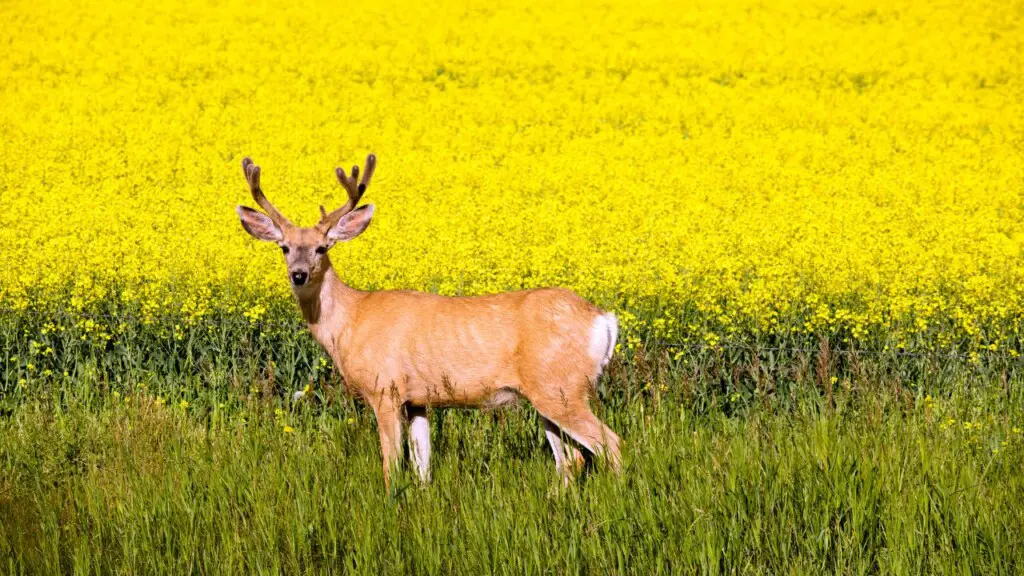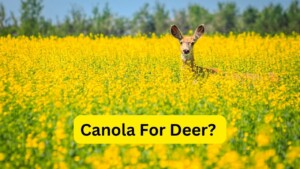Canola for deer is a great alternative to corn. It is high in protein and low in sugar, which makes it a healthier option for deer. Canola is also a good source of essential fatty acids, which are important for deer health.
If you are a deer hunter, you know that canola is a great food source for deer. Canola is high in protein and is a great source of energy for deer. Canola is also a good source of essential fatty acids, which are important for the health of deer.
Impact Forage Collard, Trophy Rapeseed, Winter Canola
Canola seed
Canola seed is a small, round seed that is used to grow canola plants. This is a type of rapeseed, and the name “canola” is a combination of “Canada” and “ola,” which means oil. Moreover, Canola oil is a healthy oil that is used in cooking and baking.
Its seed is used to grow canola plants, which are then used to produce canola oil. It is also used as a biofuel. Canola plants are grown in many parts of the world, including Canada, the United States, and Australia.

Credit: www.canva.com
What is the best thing to plant to attract deer?
There is a wide variety of plants that can attract deer, depending on what part of the country you live in and what type of deer you are trying to attract. In general, native plants are the best choice for attracting deer, since they are accustomed to eating them.
Here are a few of the best plants to attract deer:
1. Fruits and Berries: Deer love to eat fruits and berries, so planting a variety of these in your garden can be a great way to attract them. Some of the best fruits and berries to plant include: apples, pears, plums, cherries, raspberries, blackberries, and grapes.
2. Flowers: Many types of flowers are also favorites of deer. Some of the best flowers to plant to attract deer include: marigolds, cosmos, zinnias, and impatiens.
3. Vegetables: While deer usually prefer fruits and flowers, they will also eat many types of vegetables. Some of the best vegetables to plant to attract deer include: lettuce, cabbage, carrots, and peas.
4. Trees: Deer love to eat the leaves of trees, so planting a variety of trees in your yard can be a great way to attract them. Some of the best trees to plant to attract deer include: maples, oaks, birches, and pines.
What is a deer’s favorite crop?
There are a few different types of crops that deer enjoy eating, but their favorite crop is likely alfalfa. Deer will also eat corn, soybeans, and other green vegetables.
Do deer prefer wheat or oats?
Deer prefer wheat over oats because wheat is a more nutritious option for them. They also need a lot of nutrients to stay healthy, and wheat provides more of the nutrients that they need than oats do. Some, Deer also prefer the taste of wheat over oats.
What is a good perennial food plot for deer?
If you’re looking to attract deer to your property, one of the best things you can do is plant a perennial food plot. Perennial food plots are areas of land that are planted with food sources that will last for multiple years. This can be anything from a fruit or nut tree to a patch of berry bushes.
Not only will this provide a consistent food source for deer, but it will also help to keep them coming back to your property year after year. One of the best perennial food sources for deer is acorns. Oaks are a keystone species in many forests, and their acorns are an important food source for a variety of wildlife.
Deer love acorns, and planting an oak tree or two on your property can attract them in droves. Another great option is to plant a native berry bush. Blackberries, raspberries, and other berries are all great choices that deer will love.
No matter what type of perennial food plot you choose to plant, there are a few key things to keep in mind. First, make sure to plant a variety of different food sources. This will ensure that deer have a constant food source throughout the year.
Secondly, don’t forget to supplement your food plot with a good quality deer mineral supplement. This will provide essential nutrients that deer need to stay healthy and thrive.
Deer Food Plot Seed: Enhancing Wildlife Habitat and Hunting Success
When it comes to managing wildlife habitats and enhancing hunting opportunities, creating deer food plots has become a popular and effective practice among hunters and wildlife enthusiasts alike. Deer food plots are carefully cultivated areas planted with specific seeds and vegetation to attract and nourish deer, providing them with essential nutrients and improving their overall health. In this article, we will explore the importance of deer food plot seed selection, the benefits they offer, and how to create successful food plots to support thriving deer populations.
The Significance of Deer Food Plot Seed Selection
Selecting the right deer food plot seed is a crucial step in establishing a successful and sustainable food plot. Different seeds offer varying nutritional content and growth patterns, and it’s essential to choose those that are most suitable for the specific region and climate. Some key considerations when selecting deer food plot seeds include:
1. Regional Adaptability
Opt for seed varieties that are well-adapted to the local climate and soil conditions. Seeds that thrive in one region might not perform as well in another, so it’s vital to choose those best suited to your specific location.
2. Nutritional Value
Deer require a balanced diet to maintain optimal health and body condition. The food plot seed mixture should consist of a blend of high-protein legumes, such as clover and alfalfa, and other nutrient-rich forages that deer prefer, like chicory, brassicas, and oats.
3. Planting Season
Consider the planting season and the seed’s growth rate. Fast-growing seeds can provide deer with a quick and abundant food source, while others may be more suitable for long-term nutrition.
4. Durability and Palatability
Choose seed varieties that are not only palatable to deer but also able to withstand browsing pressure. Some plants may be attractive to deer but can be easily overgrazed, leading to a diminished food plot over time.
Benefits of Deer Food Plots
Establishing well-designed deer food plots can yield numerous benefits, both for the deer population and for hunters:
1. Improved Nutrition
Food plots offer a consistent and reliable food source for deer throughout the year. This supplemental nutrition can significantly impact the health, body size, and reproductive success of deer.
2. Enhanced Wildlife Habitat
Food plots attract not only deer but also a variety of other wildlife species. These plots act as biodiversity hotspots, promoting the presence of insects, birds, and small mammals, which contribute to a thriving ecosystem.
3. Enhanced Hunting Opportunities
Strategically positioned food plots can serve as effective hunting locations. By attracting deer regularly, hunters have a higher chance of encountering game within a controlled and safe environment.
4. Observation and Conservation
Food plots provide a unique opportunity for wildlife enthusiasts and conservationists to observe deer behavior and population dynamics up close. This firsthand knowledge can inform future conservation efforts.
Creating Successful Deer Food Plots
To maximize the success of deer food plots, certain guidelines should be followed during the establishment and maintenance process:
1. Site Selection
Choose a location for the food plot that is easily accessible to deer but not too close to human activity areas. Ideally, food plots should be near water sources and cover to provide deer with a sense of security.
2. Soil Testing and Preparation
Conduct a soil test to determine the soil’s pH and nutrient levels. Amending the soil as necessary will optimize seed germination and plant growth.
3. Planting Technique
Follow the recommended planting depth and spacing for the chosen seed varieties. Proper seed-to-soil contact is essential for successful germination.
4. Maintenance
Regularly monitor the food plot for signs of overgrazing or disease. Implement a maintenance plan that may include mowing, fertilizing, and weed control as needed.
Conclusion
Deer food plots are a valuable tool in wildlife management and hunting practices, providing essential nutrition to deer and supporting overall ecosystem health. By carefully selecting suitable deer food plot seeds and adhering to proper establishment and maintenance techniques, landowners and hunters can contribute to the well-being of deer populations while enhancing their hunting experiences. Additionally, the observation and appreciation of deer and other wildlife in these plots offer a deeper connection to the natural world and foster a sense of responsibility for wildlife conservation.
Conclusion
Canola for deer is a great way to attract them to your property and keep them healthy. Canola is high in protein and essential nutrients, and deer love it. You can plant canola in your garden or in areas where deer congregate.
Welcome to Zeke’s Blogging Adventures! Dive into expert insights on travel, camping, hunting, and fishing. Our team boasts expertise and experience. We hope you enjoy reading our blog Thanks for stopping by!

